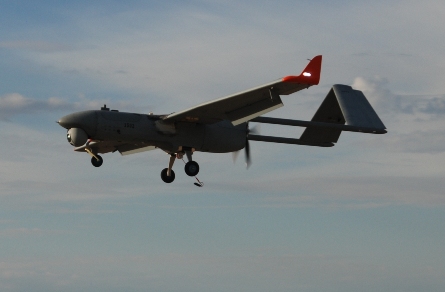AAI has confirmed flights of two heavily modified versions of the RQ-7 Shadow from its Yuma testing grounds in Arizona. The modified aircraft, called the Shadow technology test beds (STTB), are being used to test concepts for a dramatic new version of the unmanned air vehicle, the Shadow-M2. The first STTB made its flight debut on 21 July, and the two aircraft have accumulated 20h to date.
The test beds are intended to assess a new 60hp Lycoming heavy fuel engine designed specifically for Shadow-M2, in addition to a dual-payload capacity and 'smart bus' avionics system.
The Shadow-M2 represents a major departure from AAI's design philosophy to date. The fuselage, much larger to accommodate the new engine and payloads, will feature a blended-wing configuration and retractable landing gear.
"The outer mould line has been established, and we're now in the detailed design phase where we're putting the structure in place," said Steven Reid, senior vice president and general manager for unmanned aerial vehicles at AAI. "Basically, optimising what the structure looks like so we can have higher fidelity weight models.
"We're using the existing wing structure, so where we mate to that existing wing, it goes into a fully blended fuselage section. So if you look at it without the wings on it, it would be this complete blended wing," said Reid. "We did 21 different airplane designs, and then we used some of our optimisation software to create the outer mould line so we had the most efficient transition."
 |
|---|
© AAI |
Reid declined to disclose performance specifications, but other media outlets have reported a 15h endurance and 54kg (120lb) payload capacity. "We're still going through the various trades, and that's part of the dialogue with our customer is what is the end weight, flying weight. I can tell you there will be improvements in endurance, it's just a dialogue about exactly how much," said Reid.
Though design activities have yet to be finalised, AAI anticipates first flight of the new design in late spring or early summer, 2012.
Source: Flight International






















